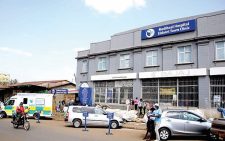Climate-related cases doubled up globally

The total number of climate change court cases has more than doubled since 2017 and the trend is growing worldwide.
Findings published by the UN Environmental Programme (UNEP) and the Sabin Centre for Climate Change Law at Columbia University, shows that climate litigation is becoming an integral part of securing climate action and justice.
The report dubbed Global Climate Litigation Report: 2023 Status Review, is based on a review of cases focused on climate change law, policy or science collected up to December, 2022, by the Sabin Centre’s US and Glonal Climate Change Litigation Database.
“Climate policies are far behind what is needed to keep global temperatures below the 1.5°C threshold. The extreme weather events and searing heat is already baking our planet,” says Inger Andersen, the Executive Director of UNEP.
She adds “People are increasingly turning to courts to combat the climate crisis, holding governments and the private sector accountable and making litigation a key mechanism for securing climate action and promoting climate justice.”
The report provides an overview of key climate litigation cases from the past two years, including historic breakthroughs. As climate litigation increases in frequency and volume, the body of legal precedent grows, forming an increasingly well-defined field of law.
The total number of climate change cases has more than doubled since a first report on the issue, from 884 in 2017 to 2,180 in 2022. While most of the cases were filed in the US, climate litigation is taking root all over the world, with about 17 per cent of the cases now being reported in developing countries.
These legal actions were brought by 65 bodies worldwide; international, regional, and national courts, tribunals, quasi-judicial bodies, and other adjudicatory bodies, including special procedures of the UN and arbitration tribunals.
“There is a distressingly growing gap between the level of greenhouse gas reductions the world needs to achieve in order to meet its temperature targets, and the actions that governments are actually taking to lower emissions. This inevitably will lead more people to resort to the courts. This report will be an invaluable resource for everyone who wants to achieve the best possible outcome in judicial forums, and to understand what is and is not possible there,” says Michael Gerrard, Sabin Center’s Faculty Director.
The report demonstrates how the voices of vulnerable groups are being heard globally as 34 of the cases were filed by and on behalf of children and youth under 25 years old, including girls as young as seven and nine years of age in Pakistan and India respectively, while in Switzerland, plaintiffs are making their case based on the disproportionate impact of climate change on senior women.















